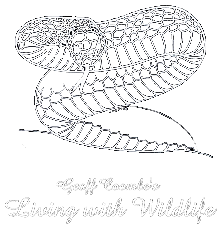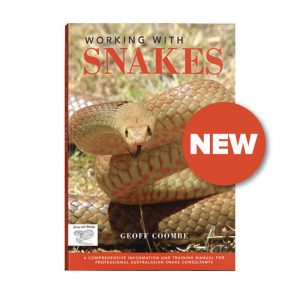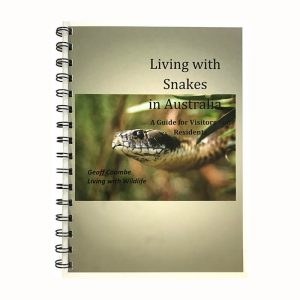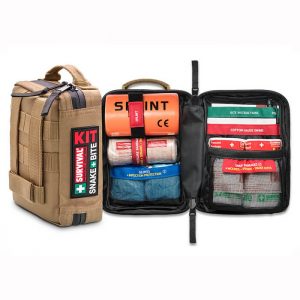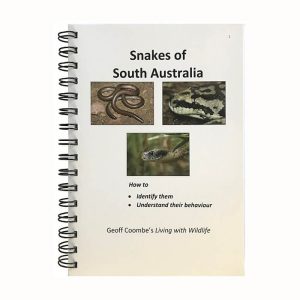Geoff Coombe OAM
Geoff is one of Australia’s leading authorities on venomous snakes. An interest in the natural environment and wildlife which started when he was a boy, has been a lifelong passion. Geoff has been teaching people about venomous snakes since 1971.
Career highlights:
- Geoff is a founding committee member of the South Australian Herpetology Group, originally established in 1971.
- One of the organisers of the highly successful Native Wildlife Shows in Adelaide in the early ’70’s.
- He was employed as ranger, law enforcement officer & interpretative ranger with the South Australian National Parks & Wildlife Service from 1971 to 1986.
- Information Officer at the South Australian Museum in 1974.
- He started the first formal wildlife interpretation/environmental education service with the NPWS at Cleland Wildlife Park in 1978
- In 1986 he co-founded Adelaide Snake Catchers with Rudy Della-Flora – believed to be the first non-profit community reptile removal & advisory service in Australia
- In 1988 he was one of the prime movers in initiating the venomous snake policies adopted by the South Australian Department of Environment & Natural Resources (National Parks & Wildlife SA)
- At the Second World Congress of Herpetology in Adelaide (1993/4) he chaired Wildlife Educators, organisers of Narama: the First Australian Expo of Reptiles & Amphibians
- A faculty member of Clinical Toxinology Short Courses since their inception in 1997
- He has been a member of the South Australian Herpetology Group (State), the Australian Society of Herpetologists (National), the International Society on Toxinology and the Society for the Study of Amphibians & Reptiles (International)
To contact Geoff please call 0408 108 508 or send an email.
The Australian Herpetological Society’s interview with Geoff Coombe about his new book ‘Working with Snakes’.
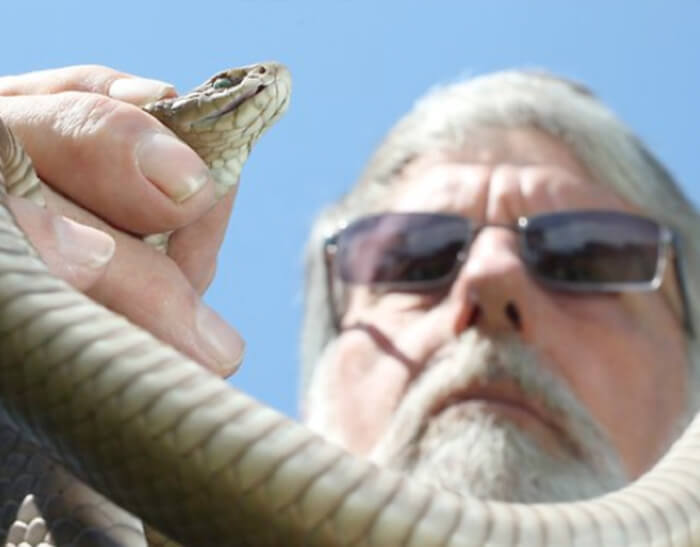
Geoff with a Brown Snake.
Presenting in Nepal.
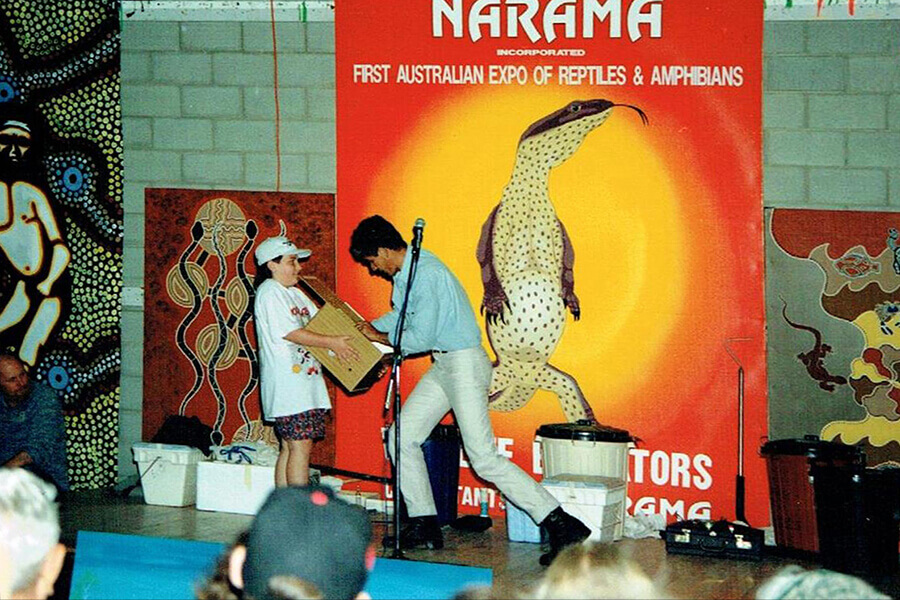
The inimitable Ted Mertens presenting at Narama.
Venomous Snakes in New Zealand
Snakes have never established in New Zealand. Various families of snakes have been intercepted in New Zealand, either dead in cargo or alive post-border.
Usually this has been when cargo has been unloaded at the wharf or one of the country’s transitional facilities. Often it has not been possible to identify a snake to species level due to insufficient information or the poor state of the specimen.
In New Zealand, the situation is unique as a snake catcher may infrequently be called out to locate and catch a snake that could represent a wide variety of species. Over the past 100 years, snakes have entered the country from Australia, USA, Canada, Panama, Guatemala, Ecuador, Chile, India, American Samoa, Solomon Islands, Vanuatu, Fiji, Papua New Guinea, Japan, China, Hong Kong, Taiwan, Thailand, Malaysia, Vietnam, Singapore, Indonesia, Greece, Italy, Sweden, Cameroon and Spain.
Snakes found have included various Australian venomous snakes, in addition to boas, pythons, colubrids, pit vipers and blind snakes from other countries, many of which have been located alive “post border”. New Zealand government policy is that all snakes caught must be euthanised as soon as possible after detection.
The Ministry for Primary Industries (MPI) is the lead government agency in New Zealand responsible for biosecurity. There are detector dog handlers, incursion and enforcement investigators, entomologists, herpetologists and quarantine staff – that have been trained as snake catchers in Adelaide since 2000 – situated in important NZ locations (offices, airports, ports) so that they can respond to a snake call out at any time.
As of November 2018, there are over 20 MPI staff trained as snake catchers. They are based in Auckland, Mt Maunganui, Nelson, Wellington, Christchurch, Dunedin and Central North Island. Some staff have been to South Australia for training on up to six occasions.
The Ministry for Primary Industries keeps an extensive database of organisms that have been intercepted entering the country, including 66 species of snakes from 8 families. While colubrids have been the bulk of snakes found (52% of interceptions), venomous species from various countries have been discovered.
These are of particular interest to MPI snake catchers, although snakes entering the country cannot usually be positively identified until they are received by the contract herpetologist for MPI. Venomous species found to date have included Death Adder, Tiger Snake, Eastern Brown Snake, Lowlands Copperhead, Small-eyed Snake, Black-naped Snake, Ord Snake, Brown Tree Snake, Puff Adder, Pope’s Tree Viper, Tiger Keelback, Red-necked Keelback, Golden Flying Snake.
Potential venomous snake interceptions based upon inter-country traffic, species ecology and ability to adapt to human altered environments, could include Lowlands Copperhead, Common Cobra, Monocellate Cobra, Banded Krait, Forest Cobra, Black-necked Spitting Cobra, Russell’s Viper, Mangrove Snake.
Indeed, in 2014 it was reported that years before, Lowlands Copperheads had been seen in Grey Valley on the West Coast of New Zealand.
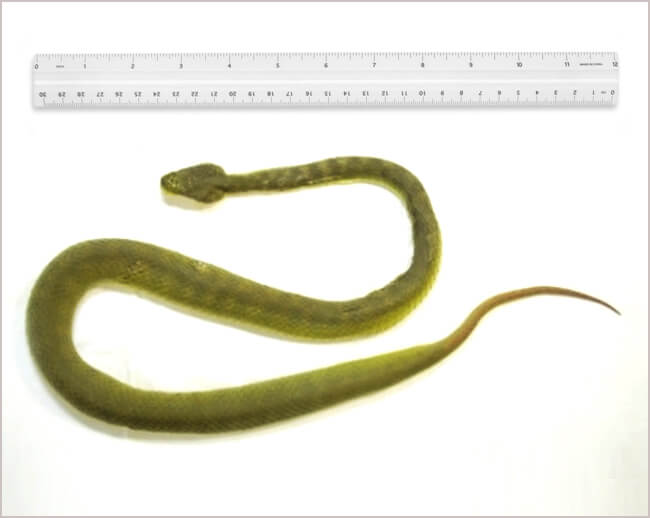
Viper intercepted on arrival in New Zealand.
The suggestion was that snakes had been taken to New Zealand from south-eastern Australia by gold miners over 100 years before. The report by Dylan van Winkel, contract herpetologist, effectively negated any chance of snakes having become established over that period of time. A small Lowlands Copperhead was discovered in a shipping container at Palmerston North in July 2017.
Old newspaper records of snakes purported to be seen in New Zealand were: an unidentified snake from the Bay of Plenty (5 April 1875), a “two metre long death adder” at Horowhenua (1892), a “two and a half foot long yellow and black snake” at Gisborne (1889), an unidentified snake at Pelichet Bay (1862), two snakes separately found on a beach at Oamaru (1892), and an unidentified snake seen in Queenstown (1984).
Concerns for NZ snake catchers are not restricted to knowing what species or type of snake they may have to catch (elapid, viper, colubrid, python etc) or if it is venomous or not. At the back of their minds will be the “what ifs” – if someone gets bitten, by what species and what to do. Only polyvalent antivenom is available in New Zealand for Australian species and there may be concerns about pathogens carried by snakes from virtually anywhere in the world.
The fact that most snakes entering the country are small to medium in size is little comfort, as that can make them harder to find, possibly harder to catch and smaller snakes don’t necessarily mean they are less dangerous, e.g. consider death adders and some vipers.
Another of the concerns for MPI is the potential for a gravid Tiger Snake or (Australian) copperhead to arrive alive and not be found before young are born. As both species are found in similar latitudes to New Zealand they could survive, as could the young (in theory at least). There could also be enough food by way of local lizards and frogs and for larger snakes, plenty of mice and birds.
New Zealand does have native snakes: marine elapids are swept ashore periodically. For example, in May and June 2016, three Yellow-bellied Sea Snakes were washed up on a Taranaki Beach. These encounters are a natural occurrence but still make the news in the country due to their relative rarity. When found they are normally returned to the ocean.

